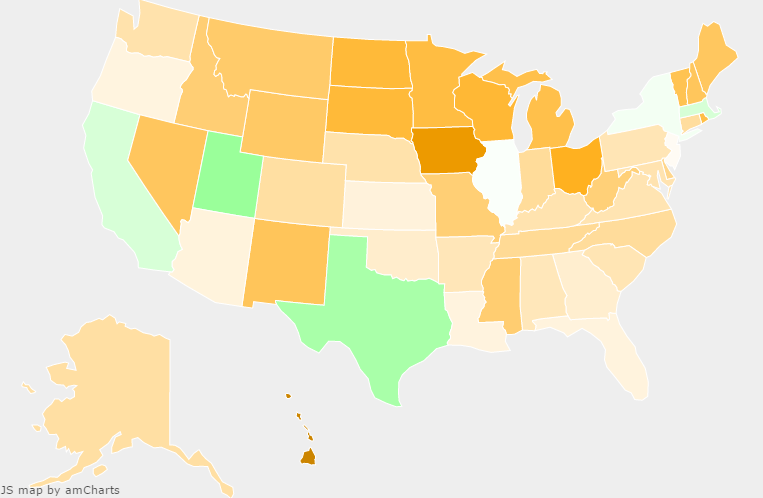Trump’s upset victory over Clinton last year surprised just about everyone. Particularly since he lost the popular vote by nearly 3 million ballots, I wanted to see how that election compared to other recent ones to better understand how much of an outlier Trump’s victory was. To more fairly compare election results across their different electorates, I wanted to normalize the vote share won by each party, and I chose to do it by dividing votes cast into the number of registered voters for each state [1]. The Census Bureau aggregates that registration data for each federal election, but the result for a given election isn’t certified and published until well into the following year.
I experimented with several regression techniques on the historical registration figures to approximate the 2016 result and ultimately settled on a simple linear regression for the analysis. In May of this year, the Census Bureau released the official registration data and I’ve now been able to calculate the actual vote share. It appears that the regression approach was a relatively accurate predictor, which further corroborates my earlier claim that a widespread “enthusiasm gap” primarily hurt Democrats in 2016.
Continue reading “official 2016 registration numbers corroborate Democratic disaffection”

